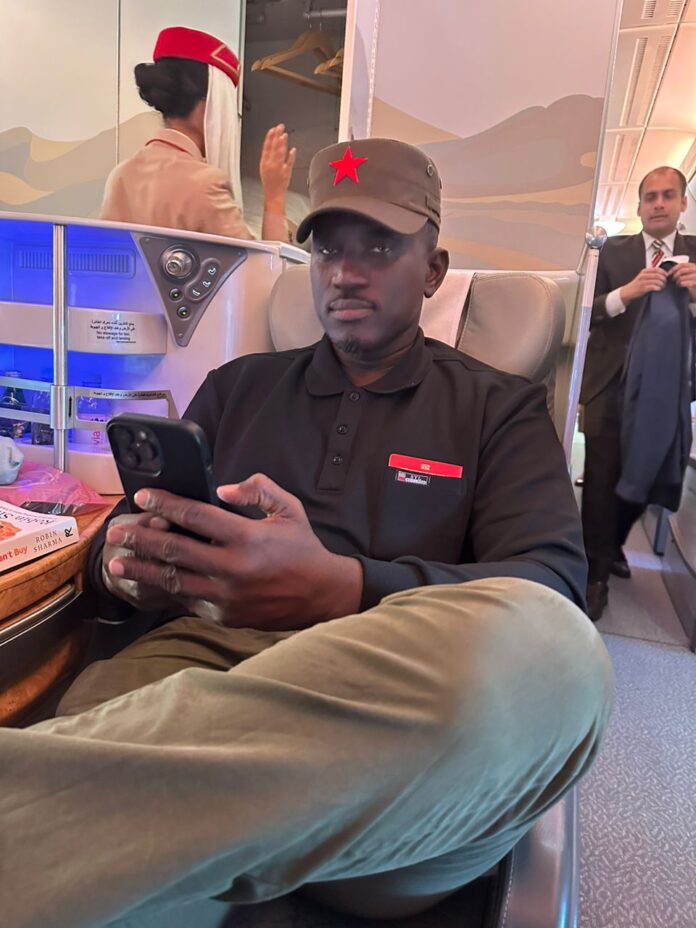What’s in a Name: letter to my friend
Dear Sheriff,
Good morning from somewhere between Beijing (China) and Dubai on board this Emirates flight EK 307, as I journey home from a ministerial workshop for Presidential Advisors in the People’s Republic of China; a place where you and I journeyed about a decade ago on some media-related state matters while you served as information minister, and I led the State broadcaster (GRTS).
Incidentally, I am listening to the kora narrative series initiated during my reign at GRTS called the “Life and Times of Lalo Kebba Drammeh.” The trailblazing kora series was anchored by legendary kora maestro the late Jali Alhagie Mbaye, assisted by broadcasting icon the late Alhagie Sarjo Barrow with Wolof translation by Alhagie Alieu Jobe.
Before I delve into the core of this missive, it should interest you that the kora emperor Lalo Kebba Drammeh was actually named after a great man from Kiang Kwinella; and that Lalo was not the real name of our kora legend. But let us leave that topic for another day.
In this episode am listening to right now, Jali Alhagie Mbaye narrates the history of the timeless Kora tune dubbed “Fayinkunko” relating to a major war that happened in Niani. The griot explains the history behind the labelling of this Kora tune that was named after the Niani Warrior Mamudou Fatouma Jawla.
This kora song was originally composed by famous maestro Bunka Jali Kuyateh whose descendants are now known to be resident in Niumi Mayamba.
The next tune to be explained in this segment of the kora series is the song called “Mam Marie Janneh Kunda” created by Lalo Kebba. The song was played in honour of a Gambian woman from Kaur Janneh Kunda who resettled in Dakar to join her husband. She was one of the patrons of Lalo Kebba.
Alhagie Mbaye then proceeds to mention some names of great Gambian women who settled in Dakar for marital reasons around the same time. These were Gambian women who loved their country and history and hence patronized Lalo Kebba who brought back to them sweet memories of their motherland through his enchanting kora music.
The ladies were known for their philanthropy towards Gambians who lived in Senegal at the time. What struck me in this part of the narrative is their names and how I was able to trace their native regions in The Gambia just by their names even before the griot spoke of their origin.
Sheriff, truly there is so much in a name. And here I would quote the common saying of Gambian youths “if you know; you know.”
This episode reminds me of a series of essays I did for the Standard newspaper around the years 2010 to 2012 while you ran that great paper. The title of the series is “What’s in a Name” and it was a subset of the trail-blazing epistolary series you and I ventured into that kept a whole country amazed. But that is also a topic for another day.
For now, just consider these names mentioned by the late Jali Alhagie Mbaye and the towns and regions they are attached to respectively:
– Mam Marie Janneh of Kaur Janneh Kunda
– Aja Tunko Dibba of Badibu Sallikenni
– Aja Kuru Darboe of Jarra Bureng
– Aja Musukebba Sonko of Niumi Sika
Now, Sheriff, tell me my good friend: Where else would Kuru Darboe come from but Jarra? Where would Tunko Dibba hail from but the city with 3 names, Lambai-Morobolong.
What gems of history lie hidden in the songs of our great griots like the legendary Lalo Kebba Drammeh and the sage of Bakau, the late Jali Nyama Suso.
That’s it for now, my good friend, we are about to land at Dubai; so, I will come up with part 2 of this missive in due course, inshaa Allah.
It is what it is: the youths are #happy
Momodou Sabally
The Gambia’s Pen




